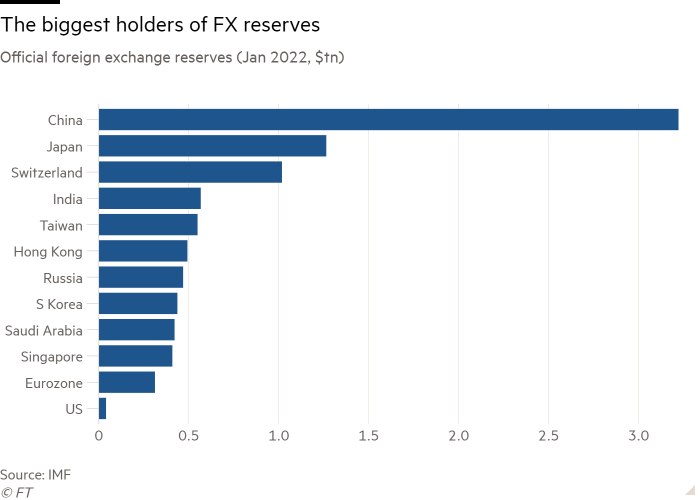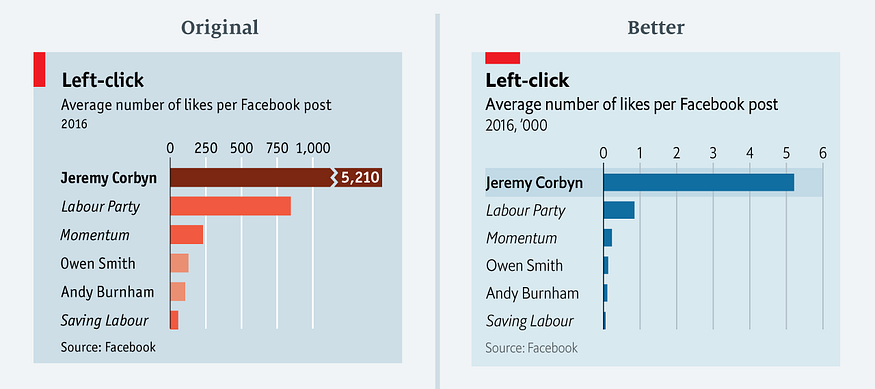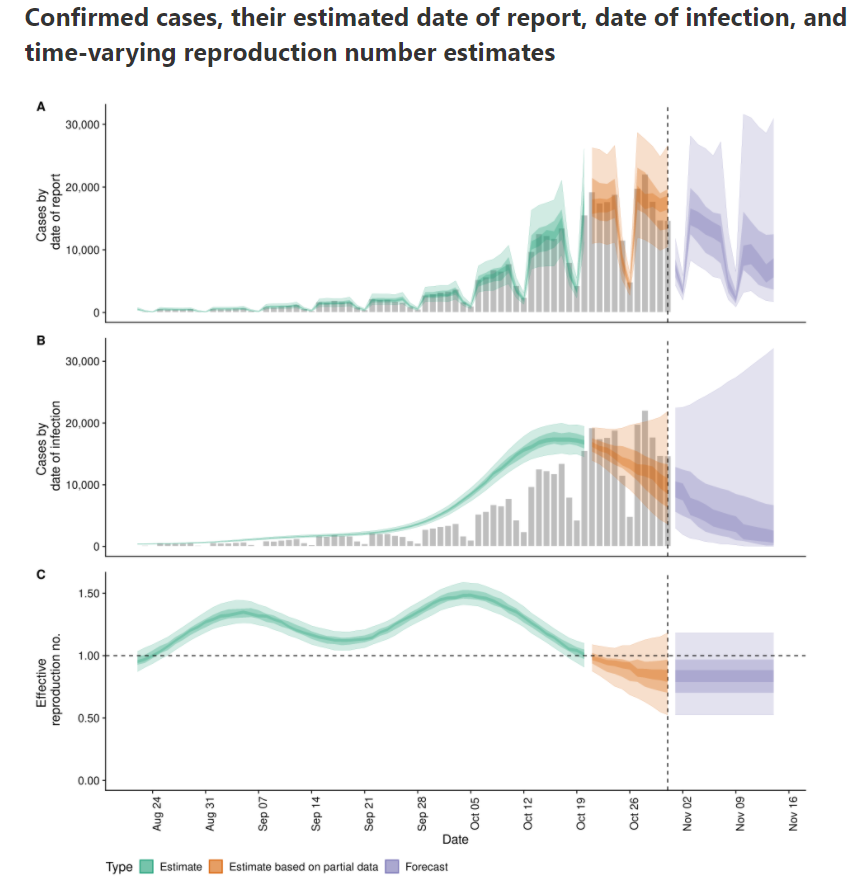Applying the Bayesian model from Rt.live on Belgium test data.
In this post we estimate the effective reproduction number of COVID-19 in the northern and southern part of Belgium. We apply the Bayesian model of rt.live on Belgian data of COVID-19 tests provided by the goverment.
import numpy as np
import pandas as pd
The current version of pymc3, installed by default in Colab, is version 3.3.7. The requirements for the Bayesian model of rt.live stipulates a more recent version. We first uninstall verions 3.3.7 and then install a version v3.9.3.
Uninstalling pymc3-3.7:
Successfully uninstalled pymc3-3.7
!pip install pymc3>=3.9.2
!pip install arviz>=0.9.0
import warnings
warnings.simplefilter(action="ignore", category=FutureWarning)
import pymc3 as pm
import arviz as az
import numpy as np
import pandas as pd
from scipy import stats as sps
import theano
import theano.tensor as tt
from theano.tensor.signal.conv import conv2d
import seaborn as sns
sns.set_context('talk')
from scipy import stats
from matplotlib import pyplot as plt
print('Running on PyMC3 v{}'.format(pm.__version__))
Now that we are running a recent version of pymc3, we can install the model:
!pip install git+https://github.com/rtcovidlive/covid-model.git
Unfortunately, this does not work. I pasted the code in this notebook as a workaround.
#hide
# from covid.patients import get_delay_distribution
# p_delay = pd.read_csv('https://raw.githubusercontent.com/rtcovidlive/covid-model/master/data/p_delay.csv')
# From https://github.com/rtcovidlive/covid-model/blob/master/covid/models/generative.py
#collapse
import warnings
warnings.simplefilter(action="ignore", category=FutureWarning)
import pymc3 as pm
import arviz as az
import numpy as np
import pandas as pd
from scipy import stats as sps
import theano
import theano.tensor as tt
from theano.tensor.signal.conv import conv2d
# from covid.patients import get_delay_distribution
class GenerativeModel:
version = "1.0.0"
def __init__(self, region: str, observed: pd.DataFrame, buffer_days=10):
""" Takes a region (ie State) name and observed new positive and
total test counts per day. buffer_days is the default number of
blank days we pad on the leading edge of the time series because
infections occur long before reports and we need to infer values
on those days """
first_index = observed.positive.ne(0).argmax()
observed = observed.iloc[first_index:]
new_index = pd.date_range(
start=observed.index[0] - pd.Timedelta(days=buffer_days),
end=observed.index[-1],
freq="D",
)
observed = observed.reindex(new_index, fill_value=0)
self._trace = None
self._inference_data = None
self.model = None
self.observed = observed
self.region = region
@property
def n_divergences(self):
""" Returns the number of divergences from the current trace """
assert self.trace != None, "Must run sample() first!"
return self.trace["diverging"].nonzero()[0].size
@property
def inference_data(self):
""" Returns an Arviz InferenceData object """
assert self.trace, "Must run sample() first!"
with self.model:
posterior_predictive = pm.sample_posterior_predictive(self.trace)
_inference_data = az.from_pymc3(
trace=self.trace,
posterior_predictive=posterior_predictive,
)
_inference_data.posterior.attrs["model_version"] = self.version
return _inference_data
@property
def trace(self):
""" Returns the trace from a sample() call. """
assert self._trace, "Must run sample() first!"
return self._trace
def _scale_to_positives(self, data):
""" Scales a time series to have the same mean as the observed positives
time series. This is useful because many of the series we infer are
relative to their true values so we make them comparable by putting
them on the same scale. """
scale_factor = self.observed.positive.mean() / np.mean(data)
return scale_factor * data
def _get_generation_time_interval(self):
""" Create a discrete P(Generation Interval)
Source: https://www.ijidonline.com/article/S1201-9712(20)30119-3/pdf """
mean_si = 4.7
std_si = 2.9
mu_si = np.log(mean_si ** 2 / np.sqrt(std_si ** 2 + mean_si ** 2))
sigma_si = np.sqrt(np.log(std_si ** 2 / mean_si ** 2 + 1))
dist = sps.lognorm(scale=np.exp(mu_si), s=sigma_si)
# Discretize the Generation Interval up to 20 days max
g_range = np.arange(0, 20)
gt = pd.Series(dist.cdf(g_range), index=g_range)
gt = gt.diff().fillna(0)
gt /= gt.sum()
gt = gt.values
return gt
def _get_convolution_ready_gt(self, len_observed):
""" Speeds up theano.scan by pre-computing the generation time interval
vector. Thank you to Junpeng Lao for this optimization.
Please see the outbreak simulation math here:
https://staff.math.su.se/hoehle/blog/2020/04/15/effectiveR0.html """
gt = self._get_generation_time_interval()
convolution_ready_gt = np.zeros((len_observed - 1, len_observed))
for t in range(1, len_observed):
begin = np.maximum(0, t - len(gt) + 1)
slice_update = gt[1 : t - begin + 1][::-1]
convolution_ready_gt[
t - 1, begin : begin + len(slice_update)
] = slice_update
convolution_ready_gt = theano.shared(convolution_ready_gt)
return convolution_ready_gt
def build(self):
""" Builds and returns the Generative model. Also sets self.model """
# p_delay = get_delay_distribution()
p_delay = pd.read_csv('https://raw.githubusercontent.com/rtcovidlive/covid-model/master/data/p_delay.csv')
nonzero_days = self.observed.total.gt(0)
len_observed = len(self.observed)
convolution_ready_gt = self._get_convolution_ready_gt(len_observed)
x = np.arange(len_observed)[:, None]
coords = {
"date": self.observed.index.values,
"nonzero_date": self.observed.index.values[self.observed.total.gt(0)],
}
with pm.Model(coords=coords) as self.model:
# Let log_r_t walk randomly with a fixed prior of ~0.035. Think
# of this number as how quickly r_t can react.
log_r_t = pm.GaussianRandomWalk(
"log_r_t",
sigma=0.035,
dims=["date"]
)
r_t = pm.Deterministic("r_t", pm.math.exp(log_r_t), dims=["date"])
# For a given seed population and R_t curve, we calculate the
# implied infection curve by simulating an outbreak. While this may
# look daunting, it's simply a way to recreate the outbreak
# simulation math inside the model:
# https://staff.math.su.se/hoehle/blog/2020/04/15/effectiveR0.html
seed = pm.Exponential("seed", 1 / 0.02)
y0 = tt.zeros(len_observed)
y0 = tt.set_subtensor(y0[0], seed)
outputs, _ = theano.scan(
fn=lambda t, gt, y, r_t: tt.set_subtensor(y[t], tt.sum(r_t * y * gt)),
sequences=[tt.arange(1, len_observed), convolution_ready_gt],
outputs_info=y0,
non_sequences=r_t,
n_steps=len_observed - 1,
)
infections = pm.Deterministic("infections", outputs[-1], dims=["date"])
# Convolve infections to confirmed positive reports based on a known
# p_delay distribution. See patients.py for details on how we calculate
# this distribution.
test_adjusted_positive = pm.Deterministic(
"test_adjusted_positive",
conv2d(
tt.reshape(infections, (1, len_observed)),
tt.reshape(p_delay, (1, len(p_delay))),
border_mode="full",
)[0, :len_observed],
dims=["date"]
)
# Picking an exposure with a prior that exposure never goes below
# 0.1 * max_tests. The 0.1 only affects early values of Rt when
# testing was minimal or when data errors cause underreporting
# of tests.
tests = pm.Data("tests", self.observed.total.values, dims=["date"])
exposure = pm.Deterministic(
"exposure",
pm.math.clip(tests, self.observed.total.max() * 0.1, 1e9),
dims=["date"]
)
# Test-volume adjust reported cases based on an assumed exposure
# Note: this is similar to the exposure parameter in a Poisson
# regression.
positive = pm.Deterministic(
"positive", exposure * test_adjusted_positive,
dims=["date"]
)
# Save data as part of trace so we can access in inference_data
observed_positive = pm.Data("observed_positive", self.observed.positive.values, dims=["date"])
nonzero_observed_positive = pm.Data("nonzero_observed_positive", self.observed.positive[nonzero_days.values].values, dims=["nonzero_date"])
positive_nonzero = pm.NegativeBinomial(
"nonzero_positive",
mu=positive[nonzero_days.values],
alpha=pm.Gamma("alpha", mu=6, sigma=1),
observed=nonzero_observed_positive,
dims=["nonzero_date"]
)
return self.model
def sample(
self,
cores=4,
chains=4,
tune=700,
draws=200,
target_accept=0.95,
init="jitter+adapt_diag",
):
""" Runs the PyMC3 model and stores the trace result in self.trace """
if self.model is None:
self.build()
with self.model:
self._trace = pm.sample(
draws=draws,
cores=cores,
chains=chains,
target_accept=target_accept,
tune=tune,
init=init,
)
return self
Read the data from sciensano:
df_tests = pd.read_csv('https://epistat.sciensano.be/Data/COVID19BE_tests.csv', parse_dates=['DATE'])
What is in this dataframe ?
|
DATE |
PROVINCE |
REGION |
TESTS_ALL |
TESTS_ALL_POS |
| 0 |
2020-03-01 |
Antwerpen |
Flanders |
18 |
0 |
| 1 |
2020-03-01 |
BrabantWallon |
Wallonia |
8 |
0 |
| 2 |
2020-03-01 |
Brussels |
Brussels |
4 |
0 |
| 3 |
2020-03-01 |
Hainaut |
Wallonia |
5 |
0 |
| 4 |
2020-03-01 |
Liège |
Wallonia |
8 |
0 |
| ... |
... |
... |
... |
... |
... |
| 2935 |
2020-10-31 |
NaN |
NaN |
58 |
13 |
| 2936 |
2020-10-31 |
Namur |
Wallonia |
864 |
387 |
| 2937 |
2020-10-31 |
OostVlaanderen |
Flanders |
927 |
106 |
| 2938 |
2020-10-31 |
VlaamsBrabant |
Flanders |
1600 |
259 |
| 2939 |
2020-10-31 |
WestVlaanderen |
Flanders |
512 |
82 |
2940 rows × 5 columns
We see that we have the number of tests (TESTS_ALL) and the number of positive tests (TEST_ALL_POS) per date, province and region. In this post, we will analyse the three regions: Brussels, Flanders and Wallonia.
Are the any Nan ?
DATE 0.000000
PROVINCE 0.083333
REGION 0.083333
TESTS_ALL 0.000000
TESTS_ALL_POS 0.000000
dtype: float64
About eight procent of the lines do not have a PROVINCE nor REGION assigned. What should we do with those ? Ignore them ? Let's look how many there are:
ax = df_tests[df_tests['REGION'].isnull()].groupby(['DATE',], dropna=False).sum().plot(figsize=(18, 4))
ax.set(title='Number of covid-19 tests per day not attributed to a region in Belgium', ylabel='Number of tests');

#hide
# (df_tests
# .fillna('Nan')
# .groupby(['DATE','REGION'], as_index=False)['TESTS_ALL']
# .sum().set_index('REGION')['TESTS_ALL']
# # .assign(total=lambda d:d[['Brussels', 'Flanders', 'Wallonia']].sum(axis=1))
# )
REGION
Brussels 4
Flanders 56
Nan 1
Wallonia 21
Brussels 17
...
Wallonia 21127
Brussels 1237
Flanders 3515
Nan 58
Wallonia 2806
Name: TESTS_ALL, Length: 980, dtype: int64
Here we create a function that distributes the non attributed tests according to the number of tests in each region. For example suppose on a day there are 10, 20 and 150 test in Brussels, Flanders and Wallonia respectively. Suppose there are 10 test unattributed in Flanders. Then we add 10 * (10/(10+20+150)) = 10 * (10/180) = 100/180 = 0.55 test to Flanders. The total number of test of Flanders becomes 10.55. We round that to the nearest integer: 11. And we do the same for the other regions Brussels and Wallonia. So we distribute the 10 unattributed tests weighted according to the number of tests in each region.
def redistribute(g, col):
gdata = g.groupby('REGION')[col].sum()
gdata.loc['Brussels'] += gdata.loc['Nan'] * (gdata.loc['Brussels']/(gdata.loc['Brussels'] + gdata.loc['Flanders'] + gdata.loc['Wallonia']))
gdata.loc['Flanders'] += gdata.loc['Nan'] * (gdata.loc['Flanders']/(gdata.loc['Brussels'] + gdata.loc['Flanders'] + gdata.loc['Wallonia']))
gdata.loc['Wallonia'] += gdata.loc['Nan'] * (gdata.loc['Wallonia']/(gdata.loc['Brussels'] + gdata.loc['Flanders'] + gdata.loc['Wallonia']))
gdata.drop(index='Nan', inplace=True)
gdata = np.round(gdata.fillna(0)).astype(int)
return gdata
# Redistribute the nan for the column TESTS_ALL
df_tests_all = (df_tests
.fillna('Nan')
.groupby(['DATE'])
.apply(redistribute, 'TESTS_ALL')
.stack()
.reset_index()
.rename(columns={'DATE':'date', 'REGION':'region', 0:'total'})
)
# Redistribute the nan for the column TESTS_ALL_POS
df_tests_positive = (df_tests
.fillna('Nan')
.groupby(['DATE'])
.apply(redistribute, 'TESTS_ALL_POS')
.stack()
.reset_index()
.rename(columns={'DATE':'date', 'REGION':'region', 0:'positive'})
)
#hide
# (df_tests
# .fillna('Nan')
# .groupby(['DATE','REGION'])['TESTS_ALL']
# .sum().to_frame().unstack()
# # .rename(pandas.index.get_level_values(0), axis='columns')
# .assign(total=lambda d:d.drop(columns=('TESTS_ALL', 'Nan')).sum(axis=1))
# )
# Combine the total number of tests and the number of positive tests into a basetable
df_tests_per_region_day = pd.concat([df_tests_all, df_tests_positive['positive']], axis=1).set_index(['region', 'date'])
# Check if the basetable is ok
assert df_tests_per_region_day.isnull().sum().sum() == 0, 'There are nan in the basetable'
#hide
# Reformat data into Rtlive format
# df_tests_per_region_day = (df_tests
# .groupby(['REGION', 'DATE'], as_index=False)
# .agg(positive=('TESTS_ALL_POS', 'sum'), total=('TESTS_ALL', 'sum'))
# .rename(columns={'REGION':'region', 'DATE':'date'})
# .set_index(["region", "date"])
# )
|
|
total |
positive |
| region |
date |
|
|
| Brussels |
2020-03-01 |
4 |
0 |
| Flanders |
2020-03-01 |
57 |
0 |
| Wallonia |
2020-03-01 |
21 |
0 |
| Brussels |
2020-03-02 |
17 |
3 |
| Flanders |
2020-03-02 |
259 |
7 |
| ... |
... |
... |
| 2020-10-30 |
38154 |
6531 |
| Wallonia |
2020-10-30 |
21414 |
9011 |
| Brussels |
2020-10-31 |
1246 |
392 |
| Flanders |
2020-10-31 |
3542 |
531 |
| Wallonia |
2020-10-31 |
2827 |
951 |
735 rows × 2 columns
# What regions do we have in the table ?
df_tests_per_region_day.index.get_level_values(0).unique().to_list()
['Brussels', 'Flanders', 'Wallonia']
ax = df_tests_per_region_day.loc[region].plot(figsize=(18,6))
ax.set(title=f'Number of tests for covid-19 and number of positives in {region}');

import datetime
from dateutil.relativedelta import relativedelta
# Remove last two days because tests are not yet fully reported
today_minus_two = datetime.datetime.today() + relativedelta(days=-2)
today_minus_two.strftime("%Y-%m-%d")
ax = df_tests_per_region_day.loc[region][:today_minus_two].plot(figsize=(18,6))
ax.set(title=f'Number of tests for covid-19 and number of positives in {region}');

# Fit the model on the data
df = df_tests_per_region_day.loc[region][:today_minus_two]
gm = GenerativeModel(region, df)
gm.sample()
Only 200 samples in chain.
Auto-assigning NUTS sampler...
Initializing NUTS using jitter+adapt_diag...
Multiprocess sampling (4 chains in 4 jobs)
NUTS: [alpha, seed, log_r_t]
100.00% [3600/3600 1:10:58<00:00 Sampling 4 chains, 0 divergences]
Sampling 4 chains for 700 tune and 200 draw iterations (2_800 + 800 draws total) took 4260 seconds.
<__main__.GenerativeModel at 0x7f382109add8>
#collapse
def summarize_inference_data(inference_data: az.InferenceData):
""" Summarizes an inference_data object into the form that we publish on rt.live """
posterior = inference_data.posterior
hdi_mass = 80
hpdi = az.hdi(posterior.r_t, hdi_prob=hdi_mass / 100).r_t
observed_positive = inference_data.constant_data.observed_positive.to_series()
scale_to_positives = lambda data: observed_positive.mean() / np.mean(data) * data
tests = inference_data.constant_data.tests.to_series()
normalized_positive = observed_positive / tests.clip(0.1 * tests.max())
summary = pd.DataFrame(
data={
"mean": posterior.r_t.mean(["draw", "chain"]),
"median": posterior.r_t.median(["chain", "draw"]),
f"lower_{hdi_mass}": hpdi[:, 0],
f"upper_{hdi_mass}": hpdi[:, 1],
"infections": scale_to_positives(
posterior.infections.mean(["draw", "chain"])
),
"test_adjusted_positive": scale_to_positives(
posterior.test_adjusted_positive.mean(["draw", "chain"])
),
"test_adjusted_positive_raw": scale_to_positives(normalized_positive),
"positive": observed_positive,
"tests": tests,
},
index=pd.Index(posterior.date.values, name="date"),
)
return summary
result = summarize_inference_data(gm.inference_data)
100.00% [800/800 00:12<00:00]
fig, ax = plt.subplots(figsize=(12, 8))
result.infections.plot(c="C2", label="Expected primary infections")
result.test_adjusted_positive.plot(c="C0", label="Expected positive tests if tests were constant")
result.test_adjusted_positive_raw.plot(c="C1", alpha=.5, label="Expected positive tests", style="--")
gm.observed.positive.plot(c="C7", alpha=.7, label="Reported positive tests")
fig.set_facecolor("w")
ax.legend();
ax.set(title=f"rt.live model inference for {region}", ylabel="number of cases")
sns.despine();

fig, ax = plt.subplots(figsize=(12, 8))
ax.set(title=f"Effective reproduction number for {region}", ylabel="$R_e(t)$")
samples = gm.trace["r_t"]
x = result.index
cmap = plt.get_cmap("Reds")
percs = np.linspace(51, 99, 40)
colors = (percs - np.min(percs)) / (np.max(percs) - np.min(percs))
samples = samples.T
result["median"].plot(c="k", ls='-')
for i, p in enumerate(percs[::-1]):
upper = np.percentile(samples, p, axis=1)
lower = np.percentile(samples, 100-p, axis=1)
color_val = colors[i]
ax.fill_between(x, upper, lower, color=cmap(color_val), alpha=.8)
ax.axhline(1.0, c="k", lw=1, linestyle="--")
sns.despine();

ax = df_tests_per_region_day.loc[region].plot(figsize=(18,6))
ax.set(title=f'Number of tests for covid-19 and number of positives in {region}');

# Remove last two days because tests are not yet fully reported
today_minus_two = datetime.datetime.today() + relativedelta(days=-2)
today_minus_two.strftime("%Y-%m-%d")
ax = df_tests_per_region_day.loc[region][:today_minus_two].plot(figsize=(18,6))
ax.set(title=f'Number of tests for covid-19 and number of positives in {region}');

df = df_tests_per_region_day.loc[region][:today_minus_two]
gm = GenerativeModel(region, df)
gm.sample()
Only 200 samples in chain.
Auto-assigning NUTS sampler...
Initializing NUTS using jitter+adapt_diag...
Multiprocess sampling (4 chains in 4 jobs)
NUTS: [alpha, seed, log_r_t]
100.00% [3600/3600 1:12:49<00:00 Sampling 4 chains, 0 divergences]
Sampling 4 chains for 700 tune and 200 draw iterations (2_800 + 800 draws total) took 4371 seconds.
<__main__.GenerativeModel at 0x7f380ac35c88>
result = summarize_inference_data(gm.inference_data)
100.00% [800/800 00:12<00:00]
fig, ax = plt.subplots(figsize=(12, 8))
result.infections.plot(c="C2", label="Expected primary infections")
result.test_adjusted_positive.plot(c="C0", label="Expected positive tests if tests were constant")
result.test_adjusted_positive_raw.plot(c="C1", alpha=.5, label="Expected positive tests", style="--")
gm.observed.positive.plot(c="C7", alpha=.7, label="Reported positive tests")
fig.set_facecolor("w")
ax.legend();
ax.set(title=f"rt.live model inference for {region}", ylabel="number of cases")
sns.despine();

fig, ax = plt.subplots(figsize=(12, 8))
ax.set(title=f"Effective reproduction number for {region}", ylabel="$R_e(t)$")
samples = gm.trace["r_t"]
x = result.index
cmap = plt.get_cmap("Reds")
percs = np.linspace(51, 99, 40)
colors = (percs - np.min(percs)) / (np.max(percs) - np.min(percs))
samples = samples.T
result["median"].plot(c="k", ls='-')
for i, p in enumerate(percs[::-1]):
upper = np.percentile(samples, p, axis=1)
lower = np.percentile(samples, 100-p, axis=1)
color_val = colors[i]
ax.fill_between(x, upper, lower, color=cmap(color_val), alpha=.8)
ax.axhline(1.0, c="k", lw=1, linestyle="--")
sns.despine();




 The rationale behind this improvement is discussed in her article:
The rationale behind this improvement is discussed in her article: 













 Behind the scene
Behind the scene  Almost Pydata quality! Big thanks to the whole Data Science Leuven team that is doing all this on voluntary basis.
Almost Pydata quality! Big thanks to the whole Data Science Leuven team that is doing all this on voluntary basis.